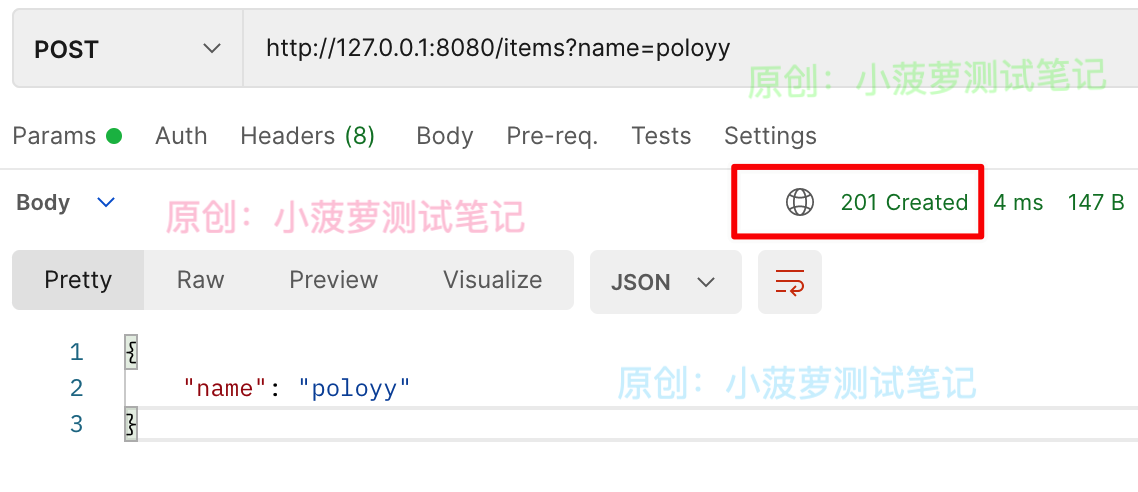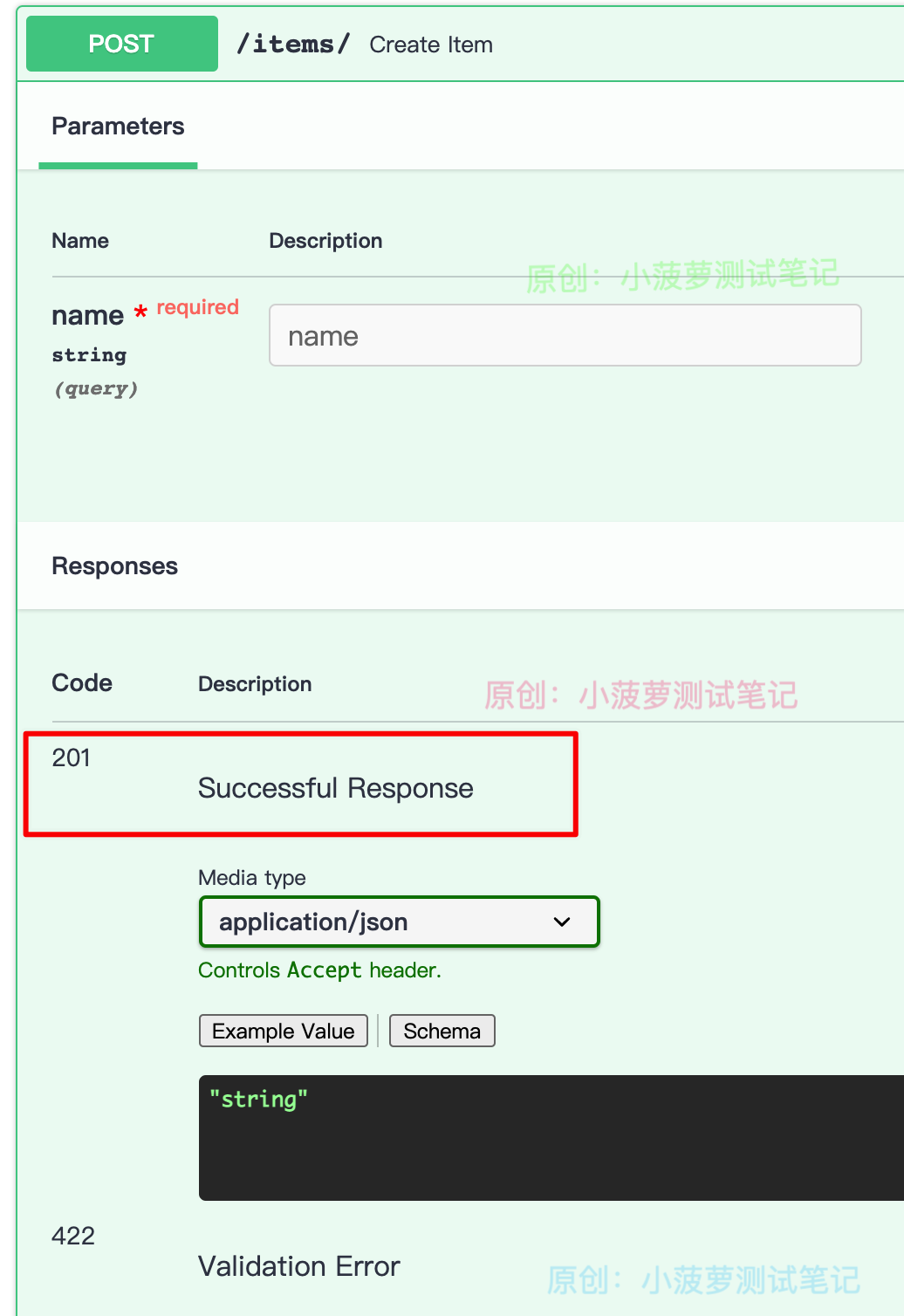FastAPI(20)- Response Status Code 响应状态码
前言
和指定响应模型一样,可以在任何路径操作中添加参数 status_code,用于声明响应的 HTTP 状态码
- @app.get()
- @app.post()
- @app.put()
- @app.delete()
最简单的栗子
#!usr/bin/env python # -*- coding:utf-8 _*- """ # author: 小菠萝测试笔记 # blog: https://www.cnblogs.com/poloyy/ # time: 2021/9/21 10:27 下午 # file: 18_status_code.py """ import uvicorn from fastapi import FastAPI app = FastAPI() @app.post("/items/", status_code=201) async def create_item(name: str): return {"name": name} if __name__ == "__main__": uvicorn.run(app="18_status_code:app", host="127.0.0.1", port=8080, reload=True, debug=True)
重点
- status_code 接收一个带有 HTTP 状态代码的 number
- status_code 也可以接收一个 IntEnum
- 如果是 number,可以使用 from fastapi import status ,里面都是封装好的状态码变量,直接调用即可
- 如果是 IntEnum,可以使用 from http import HTTPStatus ,是一个 int 类型的枚举类
status 的栗子
from fastapi import status app = FastAPI() @app.post("/items/", status_code=status.HTTP_201_CREATED) async def create_item(name: str): return {"name": name}
- 更推荐用这个,因为变量名会包含状态码+含义
- fastapi.status 是直接来自 starlette.status ,提供的东西都是一样的
HTTPStatus 的栗子
from http import HTTPStatus app = FastAPI() @app.post("/items/", status_code=HTTPStatus.CREATED) async def create_item(name: str): return {"name": name}
status_code 的作用
- 在响应中返回该状态代码
- 在 OpenAPI Schema 中记录它,也会显示在 Swagger API 文档中
正确传参的请求结果

查看 Swagger API 文档

默认的 200 变成了 201
标签:
FastAPI




【推荐】国内首个AI IDE,深度理解中文开发场景,立即下载体验Trae
【推荐】编程新体验,更懂你的AI,立即体验豆包MarsCode编程助手
【推荐】抖音旗下AI助手豆包,你的智能百科全书,全免费不限次数
【推荐】轻量又高性能的 SSH 工具 IShell:AI 加持,快人一步
· AI与.NET技术实操系列:基于图像分类模型对图像进行分类
· go语言实现终端里的倒计时
· 如何编写易于单元测试的代码
· 10年+ .NET Coder 心语,封装的思维:从隐藏、稳定开始理解其本质意义
· .NET Core 中如何实现缓存的预热?
· 分享一个免费、快速、无限量使用的满血 DeepSeek R1 模型,支持深度思考和联网搜索!
· 基于 Docker 搭建 FRP 内网穿透开源项目(很简单哒)
· 25岁的心里话
· ollama系列01:轻松3步本地部署deepseek,普通电脑可用
· 按钮权限的设计及实现
2020-09-25 Cypress系列(53)- as() 命令详解